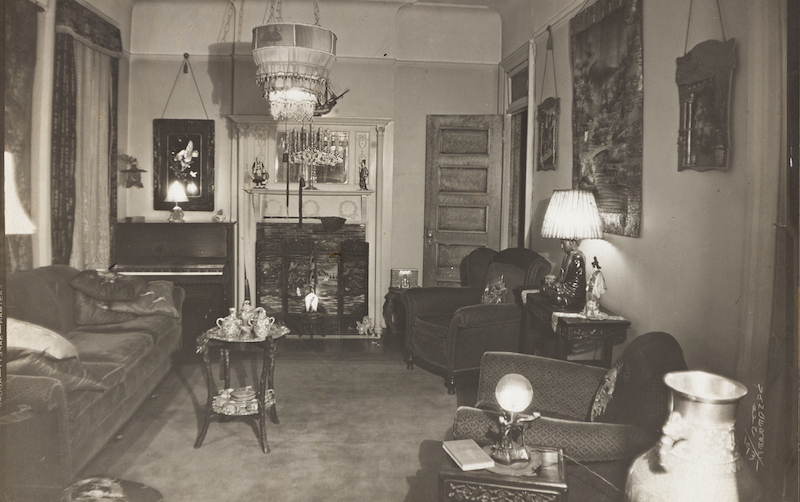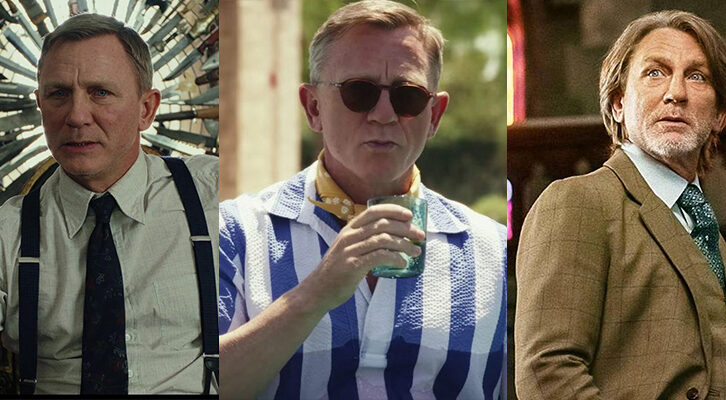J. Vanessa Lyon on Finding Inspiration in the Photography of James Van Der Zee
"A good photograph, like a good novel, represents a series of artistic choices."
Some people buy jewelry or pay down student debt with a book advance. Though I love Cartier as much as the next guy and Biden had yet to forgive my loans when I got my check, I bought a photograph instead. Or rather, I was the successful bidder at one of the always-anticipated sales held by Swann, the Manhattan firm whose 1952 auction was the first in America dedicated to the mysterious medium. The lot I badly wanted was a dark, evocative, and unidentified interior of a Harlem brownstone signed and dated in 1931, by James Van Der Zee. I had a feeling the photograph would help me write my next book.
For years in my introductory college survey, Toward a Rigorous Art History, I’ve shown images by this modernist photographer who should be a household name. I’ve read the reductive and bigoted take on his work in Roland Barthes’ Camera Lucida and assigned crucial later correctives by art historians Deborah Willis and Margaret Olin, among others. I’ve relished thoughtful seminar discussions about Van Der Zee’s open-casket funeral montages vis-à-vis American spiritualism, Black Lives Matter, and Gothic architecture. I remind students that Van Der Zee—whose pictures were enlisted for graphic murals and reportage—wasn’t acknowledged as a fine artist in the Met’s notorious Harlem on My Mind exhibition of 1969.
I came to think of the photograph as a sort of talisman for my in-progress novel.All these years later, Van Der Zee—born in 1886 in Lenox, MA not far from the site of Edith Wharton’s Beaux Arts villa, The Mount—is still routinely pigeonholed as solely a portraitist or documentarian of Black life. And it’s true, from the Jazz Age through the second World War and beyond, nobody portrayed his myriad sitters more resourcefully and attentively than Van Der Zee. Whether or not, as Rembrandt often had, the artist upgraded your outfit with something from the studio trunk, you always looked sumptuously stylish and classily uptown in a Van Der Zee shot. Much of what we know about the look of living in Harlem in the first half of the last century we owe to Van Der Zee. A man about town, he was as likely to pose a person before a painted backdrop as he was to take a group portrait on someone’s stoop or capture a regimented procession on the avenue.
A good photograph, like a good novel, represents a series of artistic choices. In art, nothing has to be where it is. Our arguments about whether a made-up story set in a given historical period or place can be excused for being all, or nearly all, white and/or male are moot. Any story can be told in such a way as to represent the underrepresented. Sometimes that choice is the newest and boldest, the most modern. It’s therefore important to approach James Van Der Zee as one would approach other innovative artists of the period. Man Ray, Hannah Hoch, Claude Cahun, and Edward Weston were all Van Der Zee’s near contemporaries. Van Der Zee was not only technically virtuosic, he was idiosyncratic and experimental. Abstraction isn’t the only way to be avantgarde. Van Der Zee is an artist whose medium happened to be black and white photography and whose subject matter of choice was primarily Black people of almost every imaginable occupation and disposition and age and gender and class and hue.
Where photography is concerned, I am a fan of the weird digression, the one-off. The Van Der Zee for me was therefore a quietly elegant image containing no sitter at all. Much as I love the flirtatious young women in all their plumed twenties glory and the families with their flowers and cats, the teams and the clubs and even the funerals and the occasional naughty fireside nude, I wanted none of that. I couldn’t imagine living with people with whom I had no connection—other, of course, than our shared designation as Black under the traditional understanding of race and blood quanta in this country.
As far as I know, nobody has discovered whose living room Van Der Zee fixed for posterity in this gelatin silver print he made the same year the Empire State building opened its doors (the Studio Museum in Harlem owns a Van Der Zee image of this living room, dated the same year and cropped slightly differently). What I like about my photograph are all the subtle indications that it, too, is a kind of self-representation and identity-construction. That the designer of this interior’s personal style is proudly on view just as quirky, individual personalities come across in the artist’s canny human portraits.
 Image courtesy of Swann Auction Galleries.
Image courtesy of Swann Auction Galleries.
So, I bid on the photograph and after things got a little hotter than I’d hoped, I bit the bullet, and won. I’m a gambler by nature. Like the stock market, and casinos, and buying steak on sale, auctions are for people who enjoy risk. Although I claimed the image of a Harlem interior for myself, I offered it to the universe as an ex voto for rewarding me for taking some of the bigger professional risks of my adult life: deciding to try my hand at fiction when I’d just turned fifty. Deciding to concoct a steamy lesbian romance when my own relationship was on the rocks. Deciding to write about the queerness of inhabiting a racialized and gendered space between and amidst Black and white, a space American culture often seems not to want to understand or greet in good faith. And to give all of that a happy, if fictional, ending.
Life can be stilled in a photograph. Van Der Zee’s portraits from the 20s and 30s effectively pressed pause on someone’s existence. Those sitters will forever be the way they are in that particular moment, yet, paradoxically, they will never be that way again. An unpopulated image such as my Harlem interior has neither an ending nor a beginning. That doesn’t mean it couldn’t tell—or inspire me to tell—a story. By and by I came to think of the photograph as a sort of talisman for my in-progress novel.
An old photograph got my mind going in unforeseen directions.Before I hung it on my wall, I was maybe a third of the way into a story that I knew would be anchored by a romantic relationship in the present between two ambitious young women, one Black and one white. Both becoming increasingly aware that the seemingly small everyday decisions they were making about work had started to affect their personal lives and the trajectory of their professional success, in important ways.
I wanted an inherited Harlem brownstone and all that came with it to serve as both setting and catalyst for the romance between Glory and Parkie. But I’m from Denver. I’d never lived in that kind of house and the photo was taken almost a century ago. So, in the beginning, I sat down each morning with the framed photograph close by, basically using it as a primary source—a literal example of late nineteenth-century architecture possibly inhabited in the early teens and updated in stages but never entirely redone. I wrote, then stared, then wrote. I started out close-looking for describable details—the living room has a period “Chinoiserie” vibe, note the Buddha lamp, lacquered fireplace screen, and porcelain figurines on the mantel—but soon realized all that materiality was getting me in a usefully imaginative mood where backstory and secondary characters were concerned.
I was writing a romance not a historical novel—I wanted there to be a sex scene on the sofa. But looking back, I think a story about the contemporary art and auction world came to invoke the Harlem Renaissance as a result of thinking and writing through this single, historical, artifact that is also a work of art. An old photograph got my mind going in unforeseen directions that had nothing to do, initially, with my characters or plot as I’d envisioned them. I do research by day, so at times it was impossible not to follow the breadcrumbs I found in the image until my curiosity was satisfied. Where was Van Der Zee’s studio? Next door to the 135th St. Public Library Branch that is today the Schomburg Center for Research in Black Culture. Could someone have read a Nella Larsen book in this room? Yes, Quicksand (1928) and Passing (1929) had both been recently published when the photo was taken.
As far as that goes, Van Der Zee’s vacant interior felt appealingly haunted. Which encouraged me to search for, and create, the spirits who were likely responsible. Unlike his more recognizable prints, the brownstone image isn’t superimposed with lithographs of angels or saints or discomfiting doppelganger negatives of the recently deceased themselves. Neither, because photographs ghost everyone, are we faced with people who are more than likely no longer with us. By contrast, our picture is a room made visible by the invisible presence of the artist. Or is it his visible absence? When my novel begins, Glory isn’t much of a romantic and she doesn’t believe in ghosts. “But she did respect the mysterious power of places and things to retain vestiges of the people who possessed them, to radiate the almost palpable charge of their previous owners’ feelings.” A good photograph can do this too.
__________________________________

Lush Lives by J. Vanessa Lyon is available from Roxane Gay Books, an imprint of Grove Atlantic.




















